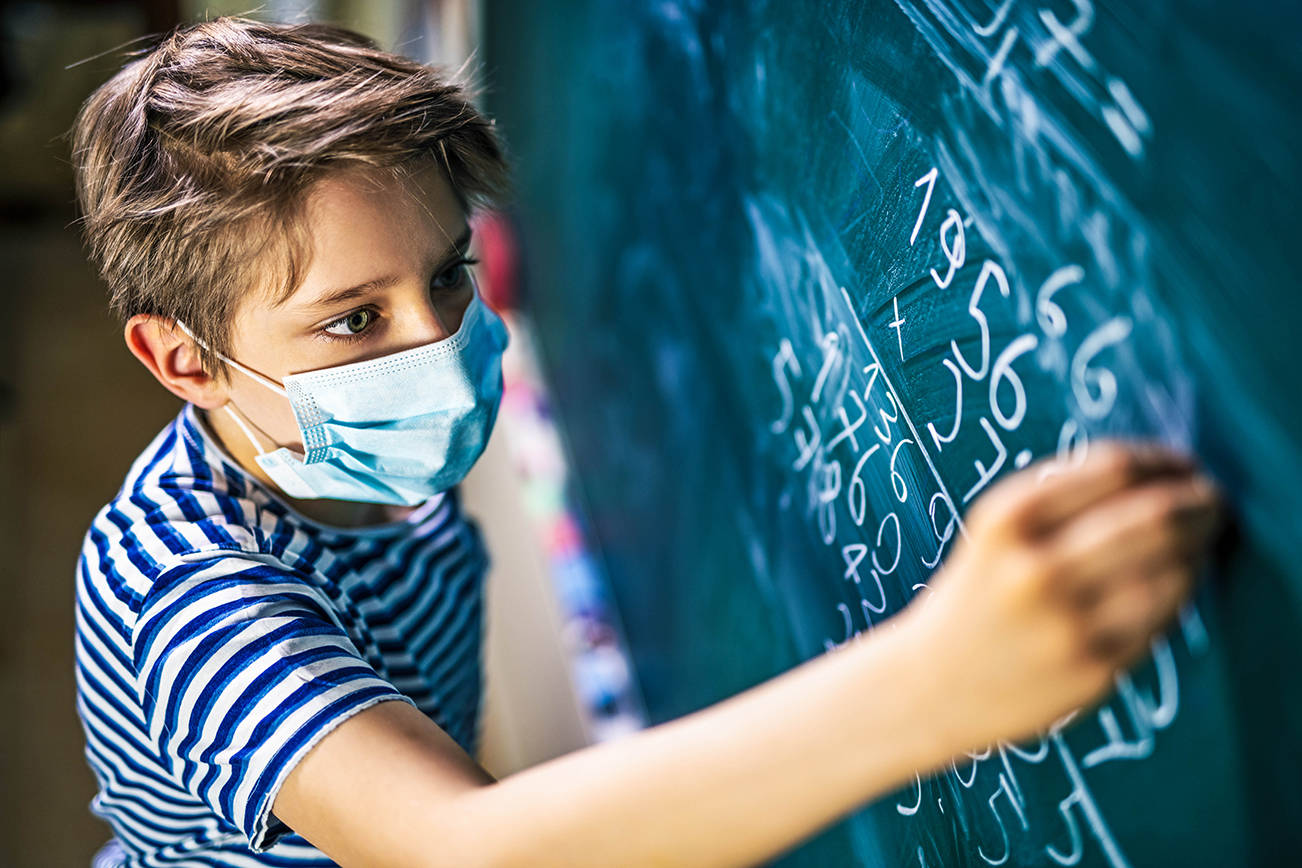Submitted by the Washington State Department of Health
It’s the height of summer, but we have back-to-school on our minds! We are working closely with the Office of the Superintendent of Public Instruction to help schools plan to reopen safely. We are regularly updating our guidance as we learn more about how this virus spreads. Right now, it includes requirement for students and staff to wear cloth face coverings, setting up classrooms to maintain six feet of distance between desks, screening students and staff for fever and other COVID-19 symptoms every day. View our COVID-19 public health guidance for schools.
No schools is an island
Today, along with Public Health — Seattle & King County and Institute for Disease Modeling (IDM), we released a new report called “Schools are not islands: we must mitigate community transmission to open schools.” The report is the result of modeling data that describes the transmission of COVID-19 to determine how it may spread in the future, depending on how effective Washington is at preventing its spread. It then predicts the course of the epidemic under various conditions in our communities and schools.
Conceptually, to understand a model, you can think about how a weather report works. Different computer models use lots of historical weather data to make predictions — if the wind continues like this, what are the chances that it will it rain? Only in our case, we are asking the model what happens if we follow the guidance we have developed for schools, and what are the chances that we can open schools without causing a spike in the epidemic?
What did we learn from this report?
We cannot go back to “normal” within our workplaces and communities and expect to be able to safely reopen school.
Opening school safely depends on continuing to reduce the amount of moving and gathering we do within our communities.
The researchers estimated that now, in King County, folks are doing about 65% of the moving and gathering we used to do prior to COVID-19.
If we continue to keep our travel and gathering less than 70% of pre-pandemic levels, we may be able to reopen schools safely, as long as we are using all the precautions in the schools — face coverings, screenings, social distancing, etc.
If our travel and gathering increase to 80% or more of our pre-COVID lifestyles, there is nothing we can do that will allow us to open schools without causing an increase in the epidemic.
We cannot safely reopen school if community transmission is increasing
Today, community transmission is increasing all over the state. We must stop this increase by the end of August in order to reopen schools. We are more likely to be able to reopen schools if we all:
• Continue to restrict our travel and the number of people we see socially.
• Wear cloth face coverings in public.
• Stay six feet or more away from other people.
• Get a COVID-19 test if you feel sick, even if you don’t have a fever.
• Stay home if you feel at all under the weather.
• Wash our hands or use hand sanitizer frequently.
School will look different
The model predicts that if we reopen schools without any special precautions like cloth face coverings, health screenings, and social distancing, the percent of the population that catches COVID-19 will double within three months.
Practice compassion
One thing is clear: if the virus is spreading in our communities, it will spread in our schools. Help our kids get back to school by doing your part to control the spread of COVID-19.
More information
Information changes rapidly. Check the state’s COVID-19 website for up-to-date and reliable info at coronavirus.wa.gov.
Answers to your questions or concerns about COVID-19 in Washington state may be found at www.doh.wa.gov/coronavirus. You can also contact the DOH call center, 6 a.m.-10 p.m., seven days a week at 1–800–525–0127.
Please note that this call center cannot access COVID-19 testing results. For testing inquiries or results, please contact your health care provider.




